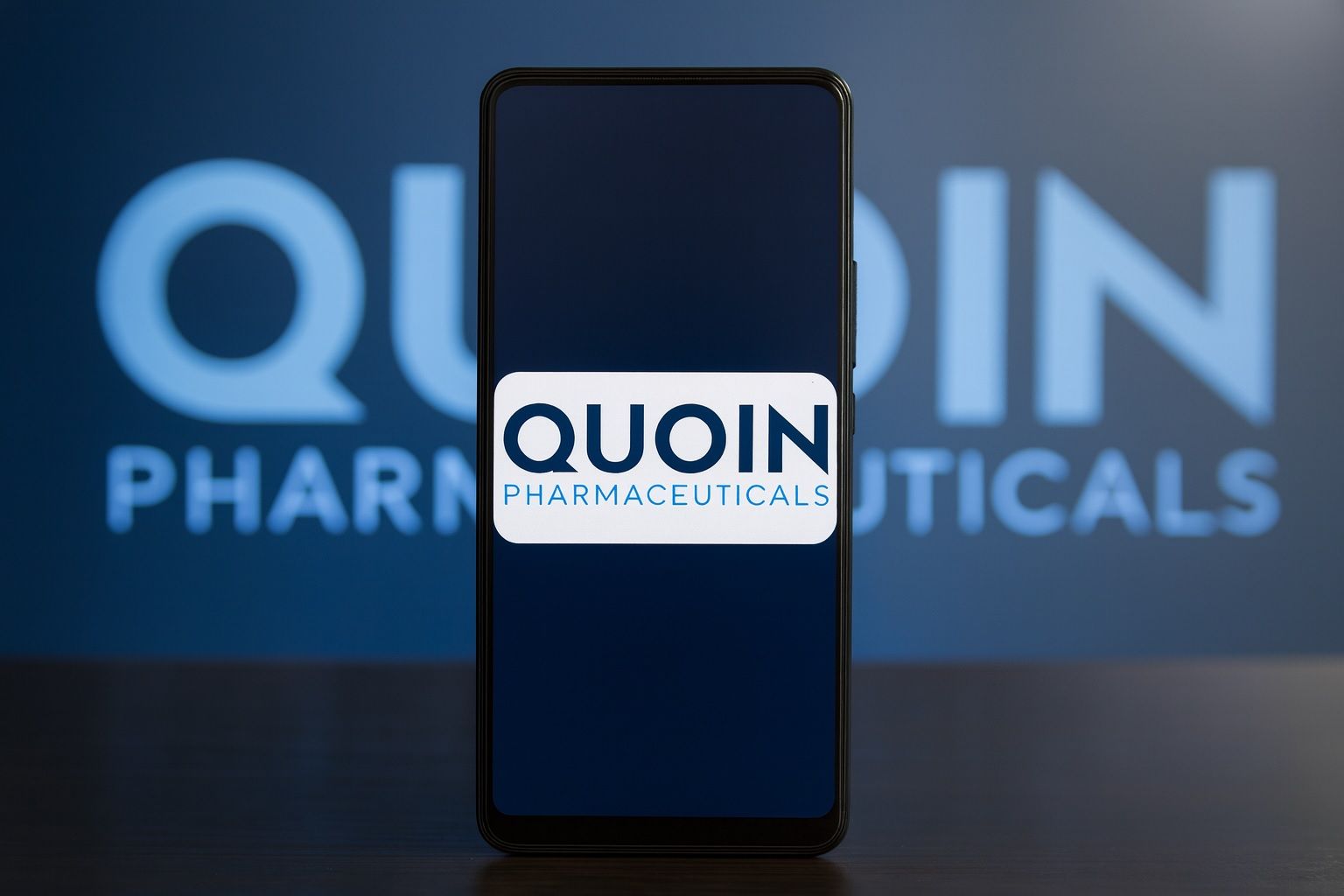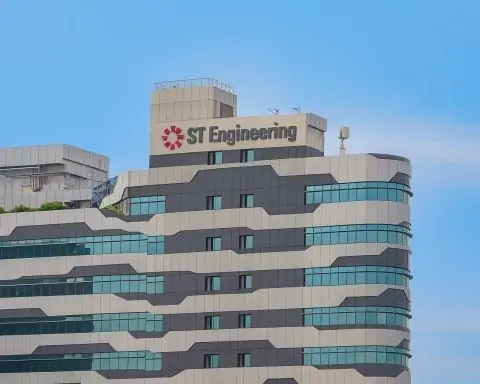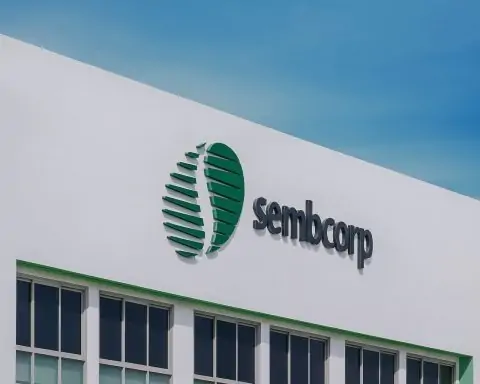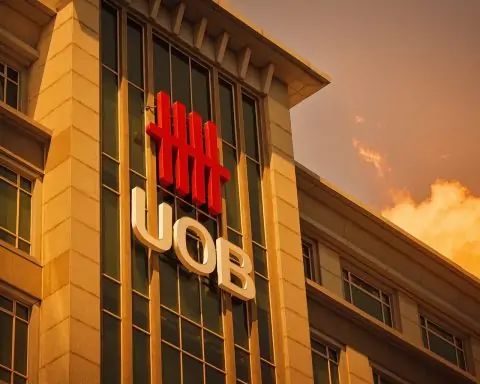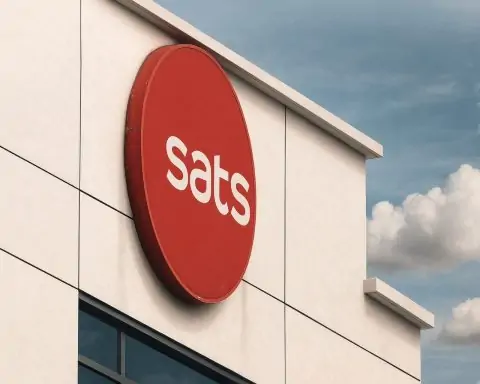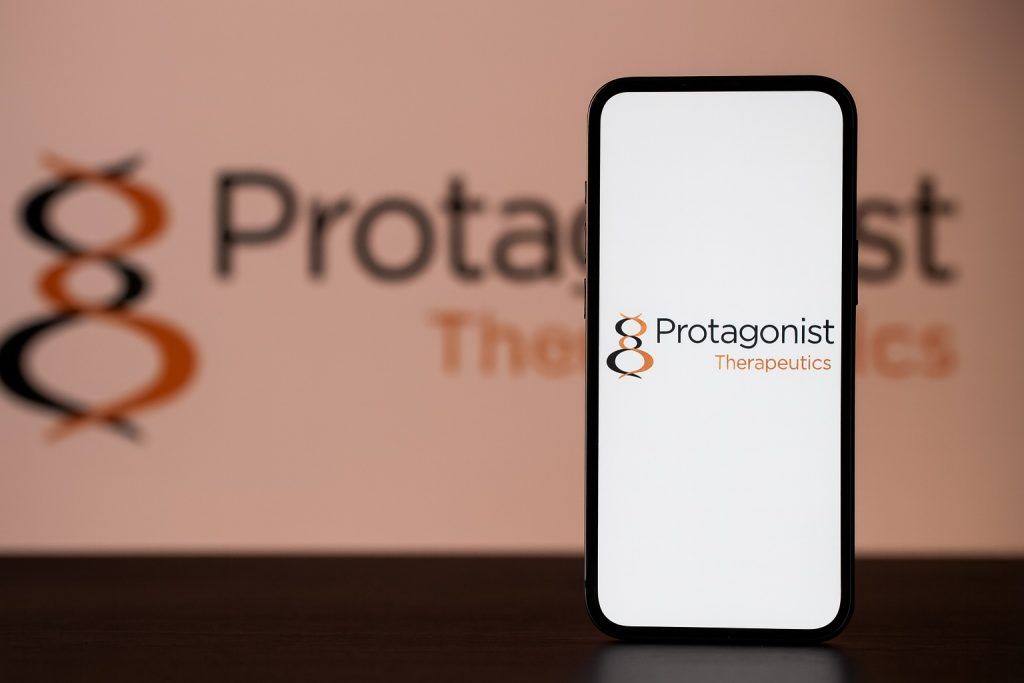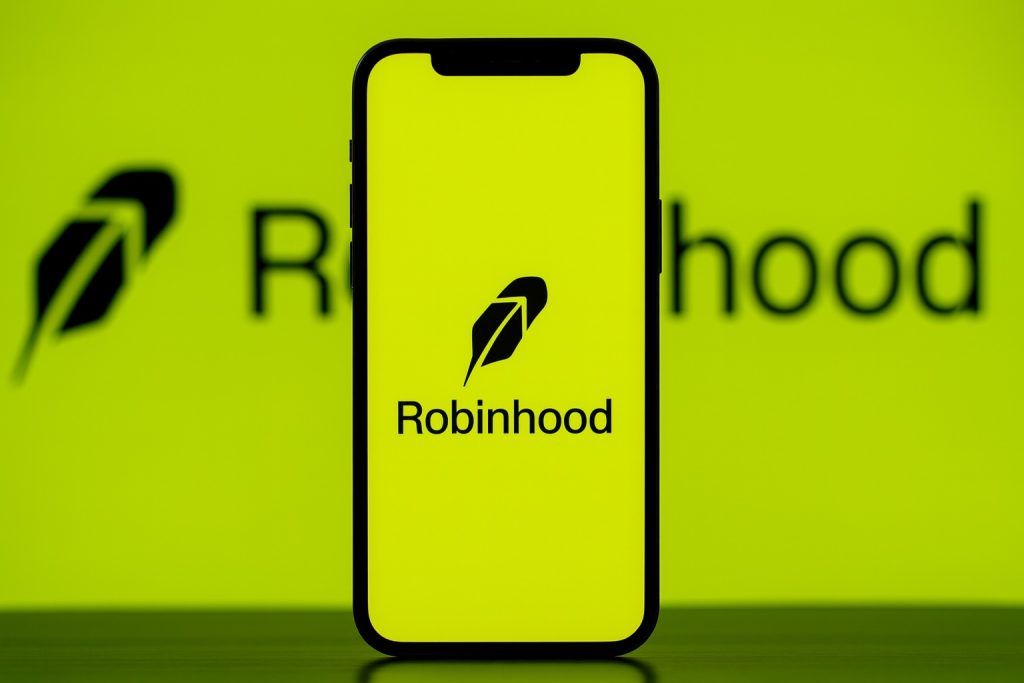- Current Stock Price (Oct 11, 2025): ~$20.50 per share (last close on Oct 10) [1] after a single-day leap of over +150%.
- Recent Surge: QNRX skyrocketed ~150% on Friday, Oct 10, 2025, following news of a $104.5 million private placement deal with institutional healthcare investors [2]. Intraday, shares hit a high of $41.80 (up ~412% at peak) before settling back [3].
- Market Cap: Approx. $160–170 million after the surge (still a micro-cap stock) [4].
- Company Focus: Late-stage specialty pharma developing treatments for rare skin diseases (lead drug QRX003 for Netherton Syndrome – a life-threatening genetic skin disorder with no approved treatments [5]). No products are on market yet (zero revenues [6]).
- Recent News & Catalysts: This week’s financing boost extends Quoin’s cash runway into 2027 [7] [8]. Earlier in Q3, Quoin reported positive clinical data and won FDA “Rare Pediatric Disease” designation and EMA Orphan Drug status for QRX003 [9] [10] – critical milestones that could accelerate approval and even earn a priority review voucher.
- Analyst Outlook: Wall Street coverage is sparse but bullish. One analyst (Maxim Group) rates QNRX a Buy with a $70 12-month price target (≈+247% upside from current levels) [11]. Overall, published targets range from ~$25 up to $70; the latest consensus target is around $47–$50 per share [12], reflecting optimism if Quoin’s pipeline succeeds.
- Trading Activity: QNRX is extremely volatile. Friday’s volume was ~13.7 million shares, hundreds of times the norm [13], and technical indicators (e.g. RSI ~93) show overbought conditions [14]. Short interest is minimal (only ~4,300 shares short as of mid-September) [15]【32†L37-L45, so the spike appears driven by new buyers rather than a short squeeze.
(Source: Nasdaq/GlobeNewswire, Reuters, TipRanks, Finviz, company filings.)
Company Overview: Rare Disease Focus and Pipeline Progress
Quoin Pharmaceuticals Ltd. is a clinical-stage biotech specializing in rare dermatological diseases. Headquartered in Ashburn, VA, Quoin’s mission is to deliver the first approved therapies for conditions that currently have none. “We remain fully focused on delivering the first approved therapy for Netherton Syndrome,” said CEO Dr. Michael Myers [16]. The company’s pipeline comprises three main product candidates targeting multiple orphan indications [17]:
- QRX003 (Lead Candidate): A topical lotion (broad-spectrum protease inhibitor) for Netherton Syndrome (NS) – a devastating genetic skin disorder causing severe barrier defects, recurring infections, dehydration, and inflammation [18] [19]. NS affects ~1 in 200,000 people and currently has no approved treatment besides supportive skin care [20]. QRX003 aims to replace the function of the missing LEKTI protein in NS patients, thereby normalizing skin shedding and reducing inflammation [21]. This drug is in pivotal trials now: Quoin is running two Phase 2/3 studies in NS, positioning to file for FDA approval in H2 2026 [22]. Notably, Quoin received Orphan Drug Designation (EU) and Rare Pediatric Disease Designation (US) for QRX003 in mid-2025 [23] [24], which grants regulatory incentives and a potential priority review voucher upon approval.
- QRX009 (Topical Rapamycin): A topical sirolimus formulation for rare vascular/skin tumors (e.g. microcystic lymphatic malformations, venous malformations, cutaneous angiofibromas). IND filings are planned in 2025, with Phase 1 trials expected to start in 1H 2026 [25] [26]. This program aims to deliver rapamycin more effectively to skin lesions, addressing conditions with limited or no FDA-approved topical therapies [27] [28].
- QRX008 (VLA-4 Inhibitor): An early-stage program for scleroderma (a rare autoimmune connective tissue disease). QRX008 is a small-molecule inhibitor targeting the VCAM-1 / VLA-4 pathway implicated in inflammation and fibrosis in scleroderma [29] [30]. Preclinical lead optimization was underway, with a goal to select a compound for clinical trials (as of 2023) [31].
Until recently, Quoin had additional assets (QRX004 for epidermolysis bullosa, and QRX007 for Netherton) but shelved those programs in mid-2025 to concentrate resources on the lead candidates [32] [33]. This streamlining reflects management’s “pipeline pruning” to focus on the most promising opportunities – especially QRX003, which is nearing the finish line. Quoin’s leadership emphasized that positive data in multiple indications (NS and a related Peeling Skin Syndrome study) and progress in the rapamycin program drove the decision to halt the other projects and double down on these key programs [34].
Financial position: As of Q2 2025, Quoin had only $7.8 million in cash on hand [35] – enough to fund operations into early 2026 [36]. The company has been running at a net loss (Q2 net loss was ~$3.7M, reflecting increased R&D spending on trials) [37]. This made additional financing critical. Enter the October private placement:
Breaking News: $104.5 M Financing Deal Spurs Rally
On October 10, Quoin announced a private placement financing of up to $104.5 million in gross proceeds [38]. The deal is significant in both scale and structure for a micro-cap biotech:
- Upfront Funding: $16.5 million in immediate gross cash proceeds [39], by issuing ~1.99 million new American Depositary Shares (ADS) at $8.25 per share [40]. Notably, this pricing was at a premium to the prior day’s closing price ( ~$8.16) [41] – a strong vote of confidence from investors. The participants are a cadre of respected healthcare-focused funds (AIGH Capital, Soleus, Nantahala, Stonepine, Adar1, Velan, etc.) [42] known for backing promising biotech ventures.
- Warrants Upside: Attached to each share are warrants (Series H, I, J, K) enabling up to an additional $88.0 million if fully exercised in cash [43]. These warrants have strike prices ranging from $9.075 to $12.375 and various trigger conditions tied to Quoin’s clinical milestones:
- Series H: Exercise price $9.075; expires 30 days after FDA feedback on QRX003 trial design (Type C meeting) or in 5 years [44].
- Series I: Exercise $10.3125; half expire 30 days after meeting primary endpoint in the monotherapy NS trial, and half after primary endpoint in the adjuvant NS trial (each within 5 years max) [45].
- Series J: Exercise $12.375; expires 30 days after announcement of FDA approval (accelerated or standard) of QRX003 [46].
- Series K: Exercise $12.375; expires 30 days after announcement of Quoin selling a Priority Review Voucher (PRV), or in 5 years [47].
- Closing & Context: The deal is set to close on or about Oct 14, 2025 [51], subject to customary conditions. Maxim Group LLC acted as the sole placement agent [52] (Maxim is also the firm whose analyst now covers QNRX with a bullish outlook, as mentioned above). Importantly, the shares and warrants were sold under a private placement exemption; Quoin will file a registration to allow resale of these securities [53]. This means the new investors could eventually sell their shares on the open market once registered – a dilution risk to keep in mind, although the premium pricing and lock-up via milestone-based warrant timing suggest these are relatively long-term oriented investors.
Market reaction: The financing news electrified the stock. By midday Friday, Quoin’s stock “skyrocketed by about 157%” on the announcement [54]. It opened at $12.21 (50% above prior close) and at one point nearly quadrupled – hitting $41.80 – as speculative frenzy set in [55]. Gains moderated into the close, but QNRX still finished +151% on the day at $20.50 [56]. One report noted the stock “soared 192%… gaining $15.69 to $23.85 on Friday” [57], though that appears to reference an earlier peak; final trade data confirm the ~$20.50 close [58] [59]. In any case, QNRX was by far the top gainer on NASDAQ, a dramatic move that garnered attention on trading forums and newswires. The volume of 13.7M shares was enormous for a stock that previously traded an average ~46K shares a day [60].
Why such euphoria over a dilutive share issuance? Two key reasons:
- Confidence Signal: The deal’s pricing above market and participation by well-known biotech funds signaled strong insider confidence in Quoin’s prospects. “The placement was priced at a premium to Quoin’s prior day closing price, signaling strong confidence in the company’s pipeline, particularly its lead candidate QRX003” [61]. In essence, smart money investors are betting that QRX003 will reach approval (and perhaps generate a lucrative priority review voucher that could be sold for ~$100M+ based on industry precedent). Retail traders often view such financings as de-risking events for cash-starved biotechs, hence they piled in.
- Improved Fundamentals: The infusion dramatically improves Quoin’s balance sheet. Pre-deal, Quoin’s ~$7.8M cash would run dry by Q1 2026 [62], raising questions about how it would fund pivotal trials. Post-deal, with $16.5M now and potentially tens of millions more as milestones are met, insolvency risk is greatly reduced. Management stated the full $104.5M would fund operations through 2027 [63], well past the anticipated FDA decision on QRX003. Essentially, Quoin may not need to tap capital markets again before it knows if it has an approved drug – a huge relief for investors worried about dilution.
In summary, this financing buys Quoin time and resources to execute its trials and possibly reach commercialization. It also aligns a group of sophisticated investors with the company’s success. These positives outweighed the dilutive impact in investors’ eyes – hence the stock surge rather than sell-off.
Fundamental Analysis: What Does the Future Hold?
With its coffers replenished, Quoin is now singularly focused on bringing QRX003 to market and expanding its pipeline’s reach. Here we examine key fundamental factors:
Cash Runway & Use of Proceeds: Quoin intends to spend the new funds on operating expenses and R&D, chiefly to complete QRX003’s pivotal development for Netherton Syndrome [64]. As noted, if all warrants eventually exercise, Quoin would have over $100M, projected to last into 2027 [65]. Even the upfront $16.5M alone likely extends the runway by roughly one additional year (on top of Q2’s cash lasting to early 2026). This means Quoin should comfortably be able to finish its ongoing trials:
- Pivotal NS Trials: The first pivotal NS study is ongoing, and a second pivotal was cleared by FDA in May 2025 [66] (to enroll 12–15 patients, completing by Q1 2026). Data from at least one of these studies could come in 2026. The milestone terms (warrants expiring if endpoints met) suggest investors expect Quoin to announce top-line NS results in 2026 – a major catalyst.
- Other Indications: Quoin is also testing QRX003 in a pediatric Peeling Skin Syndrome study (initial positive data were reported in Q2) [67], and is planning additional studies for other rare skin conditions (SAM syndrome, Palmoplantar keratoderma) where QRX003’s mechanism could apply [68] [69]. Success in NS would likely encourage expanding to these niches, multiplying the drug’s market reach.
- Regulatory & Commercial Prep: With an NDA filing targeted for late 2026 (per company guidance [70]), Quoin will also use funds to prepare for potential commercialization (e.g. manufacturing scale-up, market awareness campaigns like their ongoing “Netherton Now” initiative). Indeed, Quoin has been actively raising disease awareness – its social media campaign surpassed a million views [71] – which could help drive patient finding and physician engagement if QRX003 launches.
Market Opportunity: As an ultra-orphan disease, Netherton Syndrome has a small patient population (estimated a few thousand worldwide). However, treatments for such diseases often command very high prices, and with no competition, a first-approved therapy can capture most of the market. Analogy: In 2023, Krystal Biotech gained FDA approval for the first treatment in another rare skin disorder (dystrophic EB) and priced it at ~$633,000 per year. While NS prevalence is low, the severity and lack of alternatives could similarly support premium pricing for QRX003 if it proves safe and effective. Moreover, FDA’s Rare Pediatric Disease designation for QRX003 makes Quoin eligible for a Priority Review Voucher (PRV) upon approval [72]. PRVs for rare diseases have sold for $80–110M recently, effectively a one-time asset Quoin could monetize (the Series K warrants are actually contingent on a PRV sale [73], underlining investor expectations of this outcome).
Competition: Currently no approved therapies exist for Netherton Syndrome [74] – standard care is just moisturizers and symptomatic relief. This means Quoin’s main competition is the status quo (and perhaps off-label immunosuppressants, which have significant risks in NS). There are a few other players exploring NS treatments:
- Boehringer Ingelheim is testing its IL-36 inhibitor spesolimab in Netherton patients [75], aiming to repurpose an anti-inflammatory drug (approved for a different skin condition) for NS. That trial is in early stages.
- Sixera Pharma (private) has a preclinical topical candidate (SXR1096) targeting the skin barrier defect, and Daiichi Sankyo was noted to have an early compound (DS-2325) [76]. These are still far from market.
- Other rare dermatology biotechs (e.g. Azitra, Dermelix, Timber Pharma) are working on related conditions (such as ichthyosis or epidermolysis bullosa), but Quoin is among the front-runners specifically for Netherton. Given the lead time of its pivotal trials, Quoin could very well achieve first-to-market status, which would confer significant advantages (including that 7-year US / 10-year EU market exclusivity from orphan designation [77]).
In summary, fundamentally Quoin’s story hinges on QRX003’s clinical success. The early signals are encouraging: a small investigator trial showed 6-month skin improvements in a pediatric NS patient with no adverse events [78], and similar positive data came from a Peeling Skin Syndrome study [79]. The expansion of trials and regulatory green lights in 2025 validate that the FDA and EMA see promise in the approach. If upcoming pivotal trial readouts confirm efficacy, Quoin could go from zero revenue today to a commercial-stage orphan drug company in ~2 years. The recent financing significantly de-risks the “can they survive to get there?” question, but investors must still acknowledge the binary nature of biotech: a failed trial would be devastating given Quoin’s focus on one lead asset.
Technical Analysis: Elevated Momentum, Elevated Risks
From a technical standpoint, QNRX’s chart has transformed after the October spike. Key technical observations:
- Trend & Momentum: QNRX had already been trending up in the weeks before the news (the stock rose in 7 of 10 trading days pre-announcement) [80], but the parabola on Oct 10 broke all short-term patterns. The stock smashed through any prior resistance levels. It “broke the wide and weak rising trend…an even stronger rate of rising is indicated” in the short term [81]. Both the 50-day and 200-day moving averages (which were in the single-digits) have been left far below; QNRX is in a clear technical breakout. All short- and long-term moving average signals are bullish as of now [82]. Momentum indicators like MACD confirm a strong uptrend, and volume supporting the move is extremely high (a positive technical sign) [83] [84].
- Support/Resistance: With the stock now trading in the $20s, previous price history offers little guidance. The last time QNRX was above $20 was early 2025 (and briefly after a reverse split), so there is no established support immediately below the current price. In fact, technical models warn “there is no support from accumulated volume below today’s level – given the right conditions the stock may perform very badly in the next couple of days” [85] if a reversal occurs. In other words, if momentum fades, the lack of prior bases in the teens means the stock could retrace quickly towards single-digits. $8.70 is noted as a key support (the top of the old trend channel) – if a pullback is severe, that level might act as a “second chance” entry area [86]. On the upside, new resistance might appear near the intraday high around ~$40, but that was likely an anomaly. A more moderate near-term target could be the $25 zone (which some analysts had as a price target floor [87]).
- Volatility & Risk Management: By any measure, QNRX is now highly volatile. Its average true range (ATR) is ~$2.88 (±15% of the stock price per day) [88]. On Oct 10, the intraday swing was +257% from low to high [89]. The 14-day RSI spiked to ~96, indicating extreme overbought conditions [90] – typically a sell signal, although in explosive breakouts this can persist. Stop-loss levels recommended by technical analysts are tight: one analysis suggested a stop around $19.87 (just 3% below the last close) given the elevated risk [91]. In short, traders in QNRX should brace for very wide price fluctuations.
- Trading Outlook: For the immediate term (next days/weeks), momentum could carry QNRX further, but some consolidation is expected after such a jump. A technical forecast for Monday Oct 13 projected an opening around $24.67 and an intraday range of roughly $19 to $22 (±15%) [92] – basically anticipating a pullback from Friday’s close. Chart watchers note that the stock is extremely extended above its mean price; even a 50% retracement of Friday’s range would not be unusual in the coming sessions. At the same time, the presence of enthusiastic retail traders and positive news flow could keep QNRX “in play.” It is telling that algorithmic analysis from StockInvest rated QNRX only a “hold/accumulate” post-spike, despite the many buy signals, due to the technical risk of a blow-off top [93].
Investors with a longer horizon will be less concerned with day-to-day swings and more focused on fundamental catalysts (trial results, FDA updates) – but be aware: until those fundamentals materialize, QNRX will likely trade on sentiment. Expect volatility around news (for example, when Quoin releases trial updates or if insiders/institutions report any transactions). The low float (fewer than 600K ADS outstanding pre-deal [94], and even after issuing ~2M new ADS the float is small) contributes to outsized moves. Now that QNRX is in the spotlight, liquidity has improved (millions of shares traded), but that could fade in a downturn. Caution and position sizing are prudent.
Wall Street Forecasts & Sentiment
Coverage on Quoin is limited – it’s a micro-cap biotech and only a couple of firms officially analyze it. That said, the recent developments might attract new attention. Here’s what we know:
- Analyst Ratings: According to Reuters, 2 analysts currently cover QNRX, with an average rating around “Buy” (mean score 2.0 on a 5-point scale where 1.0 is Strong Buy) [95]. TipRanks notes a “Moderate Buy” consensus, based on a single recent Buy rating [96]. In fact, Maxim Group’s analyst Naz Rahman appears to be the lone up-to-date analyst; he initiated coverage with a Buy and a $70 price target in the last three months [97]. This ultra-bullish target reflects confidence that Quoin’s lead asset can create significant shareholder value if successful. Rahman’s $70 target “implies ~247% upside from current levels” [98].
- Price Targets: Other sources list more conservative targets, likely from earlier coverage. For instance, prior to the latest rally, analysts had cited a low target of $25 and a high target of $31.50, with an average around $28.05 [99] for QNRX. However, these may be outdated or from before the financing news. Finviz, which aggregates sell-side data, now shows a consensus target of $47.50 [100] – which intriguingly is exactly the midpoint between $25 and $70. This suggests that as of now, one analyst is at $25 (perhaps a holdover from earlier in 2025) and one is at $70 (Maxim), averaging to ~$47-50. We should expect revisions or new coverage in light of Quoin’s extended runway; if QRX003 data remain positive, analysts could raise targets further.
- Qualitative Sentiment: Experts and company officials have struck an optimistic tone. Beyond the CEO’s own enthusiasm (“one of the most impactful quarters in Quoin’s history,” as Dr. Myers described Q2 progress [101]), the involvement of top-tier healthcare funds in financing speaks louder than words. Investor sentiment on forums went from apathetic to exuberant overnight – QNRX became a trending ticker on sites like Stocktwits and was highlighted as a big mover on trading platforms. Some independent bloggers and traders are speculating that Quoin’s new capital “positions [QNRX] to deliver the first FDA-approved treatment for Netherton Syndrome”, noting the company’s recent distribution partnerships in anticipation of future approval [102]. While such commentary isn’t official, it reflects the bullish narrative now surrounding the stock: Quoin is no longer viewed as a cash-strapped penny stock, but rather as a well-funded contender in the rare disease arena.
- Insider & Institutional Activity: As of the last filings, insider ownership was minimal (the company is young and much of ownership came through prior merger/SPAC processes), and institutional ownership was very low (under 1%) [103]. The new private placement, however, introduces several institutional investors to the cap table. We will see in coming SEC filings how large their stakes are. Having names like Nantahala and Velan Capital on board could increase confidence among other biotech investors. It’s worth watching if any insiders (e.g. executives or directors) buy or sell stock in the wake of the price jump – that could signal their personal view on valuation.
Bottom line on sentiment: It has flipped decisively positive after the financing news. The key question is whether this optimism will sustain. In the near term, continued positive news flow (e.g. Quoin meeting enrollment targets, interim data hints, etc.) could keep morale high. Conversely, any delays or unexpected negative updates (trial hurdles, regulatory issues) could quickly sour sentiment given the stock’s current lofty short-term gains.
Comparison to Peers and Sector Context
Quoin’s performance and prospects can be contextualized by looking at peers in the rare disease biotech space:
- Sector Movement: Small-cap biotech has been a volatile sector overall in 2025, with many companies struggling for capital. Quoin’s 150% jump in one day is an outlier, but it underscores how material clinical or financing events can re-rate these stocks. For example, other orphan-disease biotechs that secured funding or had trial breakthroughs this year also saw outsized rallies. The flip side is that failed trials often result in >50% collapses. Thus, Quoin’s trajectory is likely to continue to be binary outcome-driven compared to larger pharma stocks, which move more with broad market trends.
- Peer Benchmarking: Direct competitors specifically targeting Netherton Syndrome are few (as discussed, Quoin is ahead in this niche). However, investors might compare Quoin to companies like Krystal Biotech (KRYS) and Timber Pharmaceuticals (TMBR):
- Krystal Biotech (market cap several billion) successfully developed a topical gene therapy for a rare skin condition and recently launched it. Krystal’s stock soared upon clinical success and FDA approval, showing the upside of being first to solve a rare dermatology challenge. Quoin’s approach is different (topical protease inhibitor vs gene therapy) and NS is a different disease, but Krystal’s case shows that Wall Street can reward rare disease innovators with high valuations if they deliver a product.
- Timber Pharmaceuticals (tiny market cap, penny stock) has a topical isotretinoin gel in Phase 3 for congenital ichthyosis – another rare skin disorder. Timber’s journey has had setbacks and their stock trades under $1. Quoin’s recent rise now distinguishes it from the sub-$10M valuation club that Timber remains in. This highlights how critical clinical data and financing are: Quoin’s positive data and funding have elevated it, whereas peers without those remain languishing.
- Other orphan drug developers like Rocket Pharma (RCKT) or Beam Therapeutics (BEAM) (though focusing on different diseases) illustrate that the market tends to value platform or multi-asset pipelines higher. Quoin, in contrast, is concentrated on one main asset for now. Success with QRX003 could open the door for Quoin to expand its pipeline (perhaps inorganically – e.g., acquiring or licensing additional rare dermatology assets). The company’s focus strategy (even shelving other programs to prioritize QRX003) can be double-edged: it increases the chances of doing one thing well and fast, but offers less diversification.
In terms of valuation, even after the jump to ~$20/share, Quoin’s market cap (~$160M) is relatively modest for a late-stage biotech. For perspective, a successful NS drug could realistically achieve annual revenues in the hundreds of millions (if priced in six figures and capturing global patients). Biotechs often trade at several times peak sales potential in anticipation of approval. That largely explains why analysts like Maxim’s Rahman see room for substantial upside – his $70 target implies a market cap closer to ~$500M, which would still be on the lower end for a commercial orphan drug company. Of course, that valuation is only justified if trials succeed. Conversely, if QRX003 fails, $160M could prove very overvalued, as Quoin currently has no other near-term revenue drivers.
Conclusion and Future Outlook
Quoin Pharmaceuticals (QNRX) has rapidly transformed from a cash-limited micro-cap to a cashed-up contender on the cusp of pivotal results. The recent funding windfall not only validated the company’s science (by virtue of attracting top-tier biotech investors at a premium price) but also provided the lifeline needed to reach the finish line in clinical trials. The stock’s explosive 150% surge reflects investors’ renewed optimism that Quoin may indeed deliver a breakthrough therapy for an unmet medical need.
Looking ahead, here are the key factors and events to watch:
- Clinical Milestones: The outcomes of QRX003’s pivotal trials will make or break the investment case. Interim updates or full readouts (expected in 2026) are the most important catalysts. Hitting primary endpoints in Netherton Syndrome trials would likely propel the stock much higher (and trigger warrant exercises bringing in more capital [104]), whereas failure would likely send it crashing. Quoin’s expansion of QRX003 into related indications (like Peeling Skin Syndrome and others) also means additional data readouts could add upside. Positive data across multiple indications would reinforce that QRX003 is a platform therapy for rare skin conditions.
- Regulatory Progress: Any news of FDA meetings, fast-track status, or filing preparations will be closely watched. Since the FDA has cleared a second trial and granted special designations [105] [106], the next big regulatory step would be filing an NDA (targeted late 2026). However, Quoin might engage regulators sooner if data are compelling – for instance, seeking accelerated approval or discussing trial sufficiency. In Europe, watch for clinical trial approvals or alignment on endpoints since the EMA has given Orphan status.
- Use of PRV / Commercial Strategy: If QRX003 gets approved, Quoin would receive a Priority Review Voucher. Management will have to decide whether to sell the PRV (for a big one-time cash influx) or keep it for a future product. The fact that one warrant tranche (Series K) is tied to selling a PRV [107] suggests the investors expect Quoin to monetize it, which could alone be worth tens of millions. Additionally, Quoin has hinted at partnering or regional licensing strategies – e.g., it signed distribution agreements in certain regions for future products [108]. Any partnership deals (perhaps an ex-US commercialization partner for QRX003) could provide non-dilutive funding or validation.
- Market Conditions: Broader biotech sentiment will influence QNRX’s trading. In bullish biotech tape, investors may be more forgiving and speculative money flows into stories like Quoin. In risk-off environments, micro-cap biotechs often pull back regardless of company-specific news. Quoin’s strengthened balance sheet makes it an outlier (many peers are struggling to raise cash), which could attract relative interest, but it won’t be immune to sector rotations.
For investors considering QNRX, the proposition is high-risk, high-reward. In the short term, expect volatility to persist – the stock could just as easily dip on profit-taking or spike again on momentum trading. In the long term, the stock’s trajectory will hinge on clinical trial success. Quoin has aligned itself for success with funding and focus; now the execution of trials and quality of the data will determine if this recent rally is the start of something bigger or a flash in the pan.
In summary: Quoin Pharmaceuticals has put itself on the map with bold funding and the promise of a first-in-class therapy for a cruel rare disease. The recent surge has been spectacular, but it is the fundamental outcomes in the coming year or two that will decide QNRX’s true value. Keep an eye on trial readouts, stay mindful of the risks, and buckle up – this small stock’s journey is just entering its most pivotal chapter.
Sources:
- Quoin Pharmaceuticals Press Release, Oct 10, 2025 – “Private Placement Financing of Up to $104.5 Million” [109] [110] [111]
- TipRanks News (R. Saraogi), Oct 10, 2025 – “Why QNRX Exploded Today” [112] [113]
- Reuters Market Data – QNRX stock quote and key stats [114] [115] [116]
- StockInvest.us Technical Analysis – QNRX update Oct 10, 2025 [117] [118]
- GlobeNewswire (Quoin) Q2 2025 Update – CEO quote & clinical milestones [119] [120]
- StockTitan (GlobeNewswire summary) – Financing details and use of proceeds [121] [122]
- Fintel/Finviz Consensus Data – Analyst targets and performance metrics [123] [124]
- MarketBeat / Short Interest data – negligible short float (Sep 2025) [125] [126]
- Boehringer Ingelheim pipeline info – IL-36R inhibitor in Netherton trial [127]
(Additional references: Yahoo Finance, TradingView, FierceBiotech [128] [129].)
References
1. www.reuters.com, 2. www.tipranks.com, 3. stockinvest.us, 4. www.reuters.com, 5. quoinpharma.com, 6. finviz.com, 7. www.stocktitan.net, 8. www.stocktitan.net, 9. www.globenewswire.com, 10. www.globenewswire.com, 11. www.tipranks.com, 12. finviz.com, 13. stockinvest.us, 14. stockinvest.us, 15. www.marketbeat.com, 16. www.globenewswire.com, 17. finviz.com, 18. quoinpharma.com, 19. quoinpharma.com, 20. quoinpharma.com, 21. quoinpharma.com, 22. www.fiercebiotech.com, 23. www.globenewswire.com, 24. www.globenewswire.com, 25. quoinpharma.com, 26. quoinpharma.com, 27. quoinpharma.com, 28. quoinpharma.com, 29. quoinpharma.com, 30. quoinpharma.com, 31. quoinpharma.com, 32. www.fiercebiotech.com, 33. www.fiercebiotech.com, 34. www.fiercebiotech.com, 35. www.globenewswire.com, 36. www.globenewswire.com, 37. www.globenewswire.com, 38. www.globenewswire.com, 39. www.stocktitan.net, 40. www.stocktitan.net, 41. www.tipranks.com, 42. www.stocktitan.net, 43. www.stocktitan.net, 44. finviz.com, 45. finviz.com, 46. finviz.com, 47. finviz.com, 48. www.stocktitan.net, 49. www.stocktitan.net, 50. www.globenewswire.com, 51. www.stocktitan.net, 52. www.globenewswire.com, 53. www.globenewswire.com, 54. www.tipranks.com, 55. stockinvest.us, 56. stockinvest.us, 57. www.rttnews.com, 58. finviz.com, 59. finviz.com, 60. finviz.com, 61. www.tipranks.com, 62. www.globenewswire.com, 63. www.stocktitan.net, 64. www.stocktitan.net, 65. www.stocktitan.net, 66. www.globenewswire.com, 67. www.globenewswire.com, 68. quoinpharma.com, 69. quoinpharma.com, 70. www.globenewswire.com, 71. finviz.com, 72. www.globenewswire.com, 73. finviz.com, 74. quoinpharma.com, 75. www.boehringer-ingelheim.com, 76. www.delveinsight.com, 77. www.globenewswire.com, 78. www.globenewswire.com, 79. www.globenewswire.com, 80. stockinvest.us, 81. stockinvest.us, 82. stockinvest.us, 83. stockinvest.us, 84. stockinvest.us, 85. stockinvest.us, 86. stockinvest.us, 87. fintel.io, 88. stockinvest.us, 89. stockinvest.us, 90. stockinvest.us, 91. stockinvest.us, 92. stockinvest.us, 93. stockinvest.us, 94. finviz.com, 95. www.reuters.com, 96. www.tipranks.com, 97. www.tipranks.com, 98. www.tipranks.com, 99. fintel.io, 100. finviz.com, 101. www.globenewswire.com, 102. www.tradingview.com, 103. finviz.com, 104. finviz.com, 105. www.globenewswire.com, 106. www.globenewswire.com, 107. finviz.com, 108. www.tradingview.com, 109. www.globenewswire.com, 110. www.stocktitan.net, 111. www.stocktitan.net, 112. www.tipranks.com, 113. www.tipranks.com, 114. www.reuters.com, 115. www.reuters.com, 116. www.reuters.com, 117. stockinvest.us, 118. stockinvest.us, 119. www.globenewswire.com, 120. www.globenewswire.com, 121. www.stocktitan.net, 122. www.stocktitan.net, 123. fintel.io, 124. finviz.com, 125. www.marketbeat.com, 126. www.marketbeat.com, 127. www.boehringer-ingelheim.com, 128. www.fiercebiotech.com, 129. www.fiercebiotech.com
